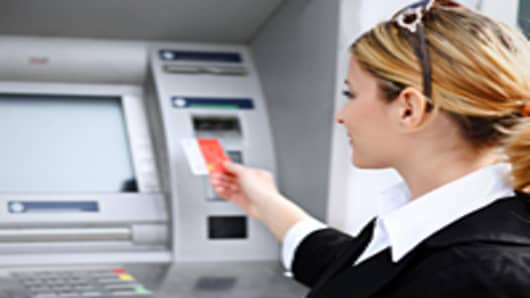Skimming is the process of stealing card numbers using a device installed in ATMs or in the swipe device that’s used to access an ATM lobby; the pin number is captured using micro-cameras. The information is then used to make a counterfeit clone of the original card and is used to buy goods and services or withdraw cash.
It’s a practice that is on the rise. According to the Nilson Report, "Fraud losses from theft of credit card skimming is on pace to total $10 billion by 2015."
Mike Urban, the director of financial crimes risk management at Fiserv, a provider of financial solutions to the financial world, discussed the rapid spread of card fraud, which outpaced credit fraud losses for the first time in 2011. Urban said that PIN and chip cards will be vital to curtailing ATM skimming, network hacks and retail fraud, at least in cases where the card must be physically present for use.
“Chip and PIN cards are the ‘next generation’ of payment cards," said Urban. "They are used throughout Europe, Asia and more recently Canada and Mexico." These cards use dynamic data in the chip which is encrypted, and Urban says they are much more difficult to replicate than the current "static" magnetic stripe.
“The reason counterfeit card fraud is such a growing problem is the ease with which the data can be stolen and copied to another card," he continues. "The PIN is just as important as the chip. PIN-based transactions have significantly less fraud than signature transactions."
Card skimming at restaurants is a leading cause of credit card fraud, according to the Mercator Advisory Group, which says restaurants account for the majority of card-skimming incidents. When diners hand over their cards to unscrupulous servers, charges can be entered twice. Greg Meyer, community relations manager for Meriwest Credit Union, advises checking your account the next day to make sure you were only charged once, and for the right amount.
A product called The Rail, currerntly in beta testing in the Seattle area, offers a solution which brings the card processing system to the table.
One thing on consumers’ side is that for the banks issuing the debit cards, it’s in their best interest to stay on top of fraud. “Almost all debit card issuers use real-time fraud detection applications, which inspect all characteristics of a transaction and compare it to the card holder’s normal behavior to identify anomalies and the level of fraud risk in a transaction,” said Urban. “That level of risk is translated to a numeric score that indicates the likelihood the transaction is fraud.”
Overdraft fees
Fees for overdrawing a checking account are another potential downside to using debit cards — they can be seen as expensive loans. It’s easier for this to happen with a debit card than with a check, since people usually track checkbook balances with their register.
Customers typically have no warning, nor are their cards declined; and most customers would not choose to go into overdraft mode if they were aware, according to The Center for Responsible Lending.
Consumers who overcharge on their debit card are hit with fees averaging $30 to $35 for each charge. Sometimes, instead of deducting transactions in chronological order, those offending charges are deducted from the account in order from larger to smaller ones, which maximizes the amount of penalty fees. This practice is currently under investigation by the Consumer Financial Protection Bureau.
A proposed method to raise awareness on this issue is called the penalty box, which will appear on statements to show how much consumers are paying in fees, akin to the warning credit cards are now required to provide on statements.
How consumers can protect themselves
Watch what you share on social media. Many people — 68 percent, according to the Identity Fraud Report — include information on their public profiles that are often used by financial institutions to verify a customer’s identity: your full birthdate, your pet’s name, your high school.
The quicker fraudulent debit card activity is caught, the better. Monitor bank accounts online and set up alerts for when withdrawals or large purchases are made with your debit card.
For online purchases and banking, use only secure Internet connections, not public wi-fi.
”To avoid the possibility of card skimming, stop using your debit card immediately and destroy it,” joked Greg Meyer, who has had his own card information skimmed. “I am being facetious, but it seems to be the only way to avoid it.”
Ways to lessen the risk of skimming, however, include covering your hand when entering your pin, and avoiding the sketchier ATMs out there, especially ones more likely to be accessed by scammers — like freestanding ones found on city sidewalks.
Meyer has another suggestion: Don't sign the back of your credit card. “You are only giving a thief your signature to copy," he said. Instead, he advises people to take an indelible marker and write "Ask for identification" in block letters.
"It may not stop the little stuff like the thief spending $10 at the local market or even $25 at a restaurant, but when the big charge of $400 is made at Home Depot, it is my hope that someone looks at the back of the card and asks for ID.”



